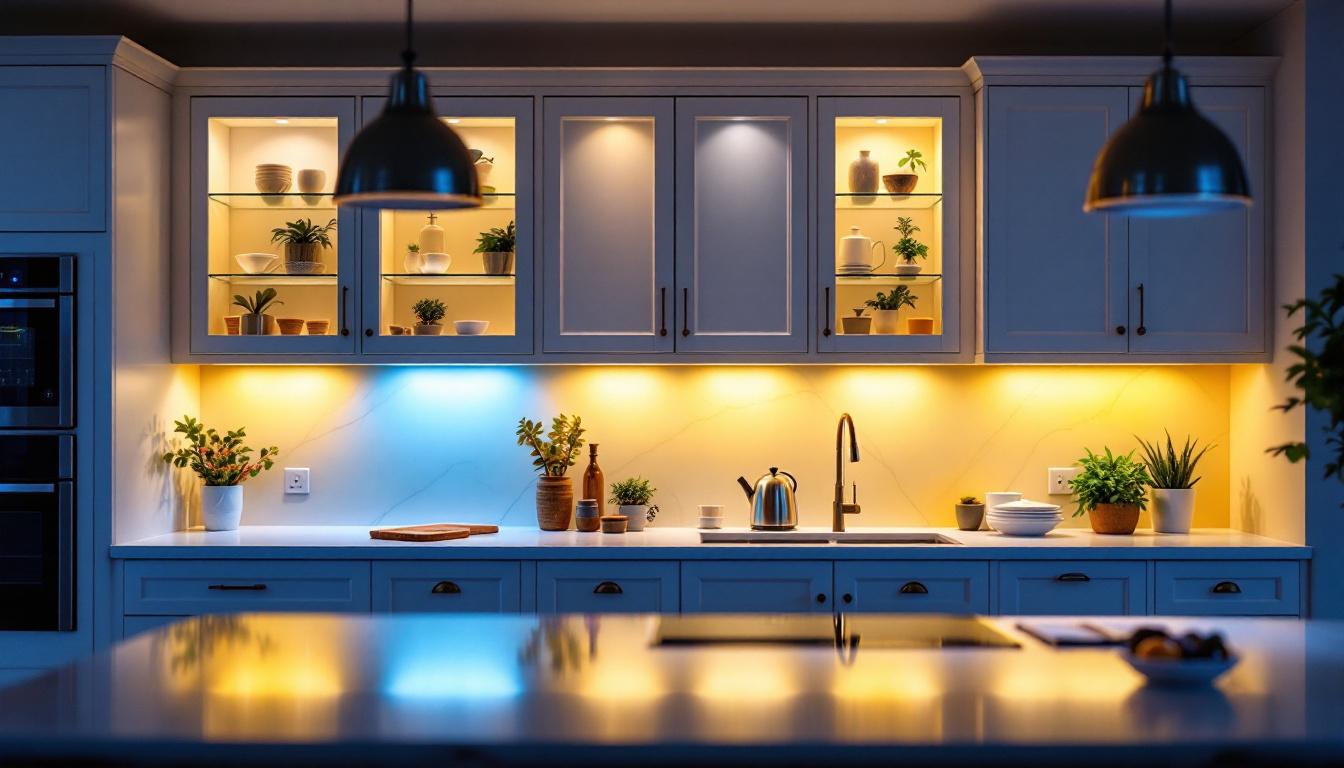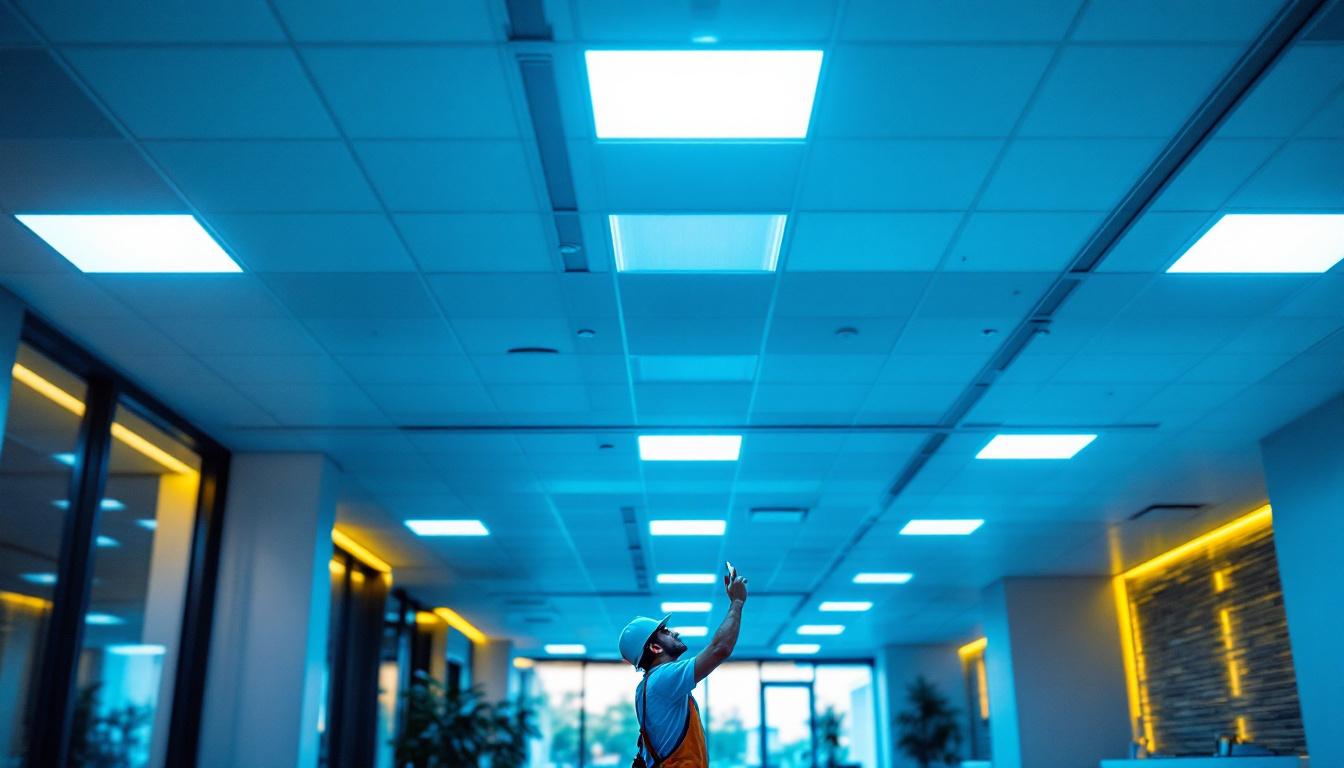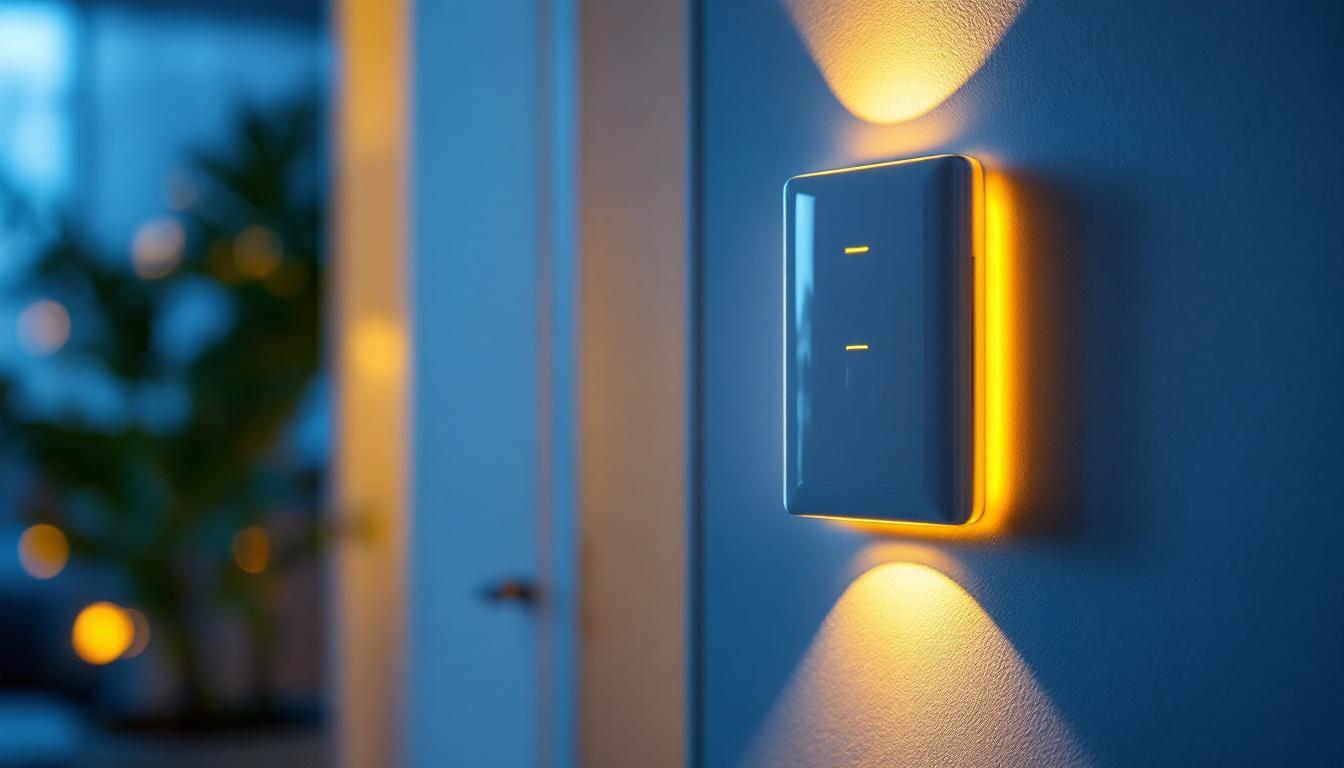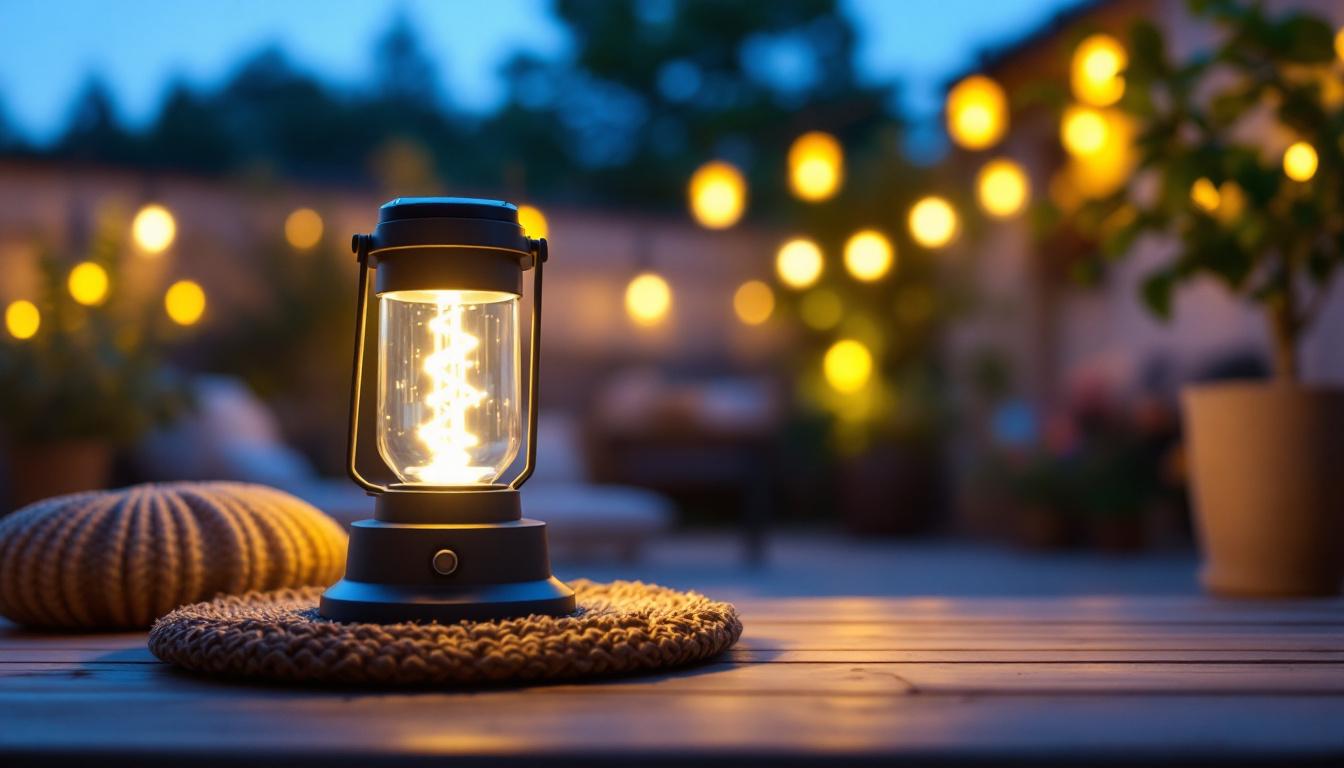
In the world of home lighting, the right choice of lamps can dramatically transform a space. While many contractors focus on fixtures and ambient lighting, LED lamps often remain an overlooked element. These energy-efficient solutions not only enhance the aesthetic appeal of a home but also contribute significantly to sustainability efforts. This article explores the best LED lamps available for residential use, highlighting their benefits, features, and how they can elevate lighting projects.
LED lamps have become increasingly popular in residential lighting due to their numerous advantages over traditional incandescent and fluorescent options. Their energy efficiency, longevity, and versatility make them an essential component in modern lighting designs.
One of the most compelling reasons to choose LED lamps is their energy efficiency. Compared to incandescent bulbs, LEDs use up to 80% less energy. This reduction in energy consumption not only lowers electricity bills but also reduces the overall carbon footprint of a home. For contractors, recommending LED lamps can be a selling point for eco-conscious clients. Furthermore, many utility companies offer rebates and incentives for homeowners who switch to LED lighting, making the transition even more financially appealing. As energy costs continue to rise, the long-term savings associated with LED lamps become increasingly significant, encouraging more households to adopt this sustainable lighting solution.
LED lamps are known for their impressive lifespan, often lasting up to 25,000 hours or more. This longevity means fewer replacements, less waste, and ultimately, cost savings for homeowners. Additionally, LEDs are more durable than traditional bulbs, as they are less prone to breakage due to their solid-state construction. Unlike incandescent bulbs, which can burn out suddenly, LEDs typically dim over time, providing a more gradual transition that allows homeowners to plan for replacements. This durability also makes them an ideal choice for hard-to-reach fixtures, where changing bulbs can be a hassle. The robust nature of LED technology means they can withstand vibrations and temperature fluctuations, making them suitable for a variety of environments, from garages to outdoor patios.
LED lamps come in a variety of shapes, sizes, and color temperatures, making them suitable for a wide range of applications. From warm white tones that create a cozy atmosphere to bright daylight options that enhance visibility, the versatility of LED lamps allows contractors to tailor lighting solutions to meet the specific needs of each project. Additionally, the ability to dim LED lights and control their brightness with smart home technology adds another layer of customization, enabling homeowners to create the perfect ambiance for any occasion. With options for recessed lighting, decorative fixtures, and even outdoor landscape lighting, LED lamps can seamlessly integrate into any design aesthetic, enhancing both functionality and style. As the technology continues to evolve, new innovations such as color-changing LEDs and smart lighting systems are making it easier than ever to personalize home lighting experiences, further solidifying the role of LEDs as a cornerstone of modern interior design.
Understanding the different types of LED lamps available can help contractors make informed decisions when selecting lighting solutions for their projects. Each type serves unique purposes and can be used in various settings throughout a home.
Standard LED bulbs are designed to replace traditional incandescent bulbs in fixtures. They come in various wattages and shapes, including A19, A21, and even decorative styles. These bulbs are ideal for general lighting in living rooms, bedrooms, and kitchens.
Recessed LED lighting provides a sleek and modern look, making it a popular choice for contemporary homes. These fixtures are installed into the ceiling, creating a clean appearance while providing ample illumination. They are perfect for accent lighting, task lighting, or general lighting in various rooms.
LED strip lights offer a flexible and versatile lighting solution. They can be installed under cabinets, along staircases, or even as decorative accents in living spaces. With options for color-changing capabilities, they allow homeowners to customize their lighting according to mood and occasion.
With numerous options available on the market, selecting the best LED lamps for home use can be daunting. Here are some top choices that stand out for their performance, design, and overall value.
Philips Hue is a leader in smart lighting technology, and their White and Color Ambiance bulbs are no exception. These LED lamps offer a wide range of colors and shades of white, allowing homeowners to create the perfect atmosphere for any occasion. With smart home integration, users can control their lighting via smartphone apps or voice commands, making it a convenient choice for tech-savvy clients.
Cree is known for producing high-quality LED bulbs that mimic the warm glow of traditional incandescent lighting. Their bulbs are available in various wattages and color temperatures, making them suitable for any room in the house. Additionally, Cree bulbs are designed to last, with a lifespan of up to 25,000 hours, ensuring long-term satisfaction for homeowners.
GE Reveal LED bulbs are designed to enhance color and clarity in living spaces. These bulbs provide a bright, white light that makes colors appear more vibrant, making them an excellent choice for kitchens and dining areas. Their energy-efficient design and long lifespan make them a practical option for homeowners looking to upgrade their lighting.
Integrating LED lamps into lighting projects offers numerous benefits that can enhance both the functionality and aesthetic appeal of a home. Understanding these advantages can help contractors advocate for LED solutions to their clients.
While the initial investment in LED lamps may be higher than traditional bulbs, the long-term savings are significant. LEDs consume less energy, leading to lower utility bills. Additionally, their extended lifespan means fewer replacements, further reducing costs over time. For homeowners, this translates into a more budget-friendly lighting solution.
As sustainability becomes a priority for many homeowners, incorporating LED lamps into lighting projects aligns with eco-friendly practices. LEDs have a lower environmental impact due to their reduced energy consumption and longer lifespan. By choosing LED solutions, contractors can help clients contribute positively to the environment while enjoying modern lighting technology.
LED lamps provide superior lighting quality compared to traditional bulbs. They offer better color rendering, which enhances the appearance of interior spaces. This improved lighting quality can make a significant difference in how a room feels and functions, making it an essential consideration for contractors when designing lighting plans.
Proper installation is crucial for maximizing the benefits of LED lamps. Here are some tips to ensure that the installation process goes smoothly and that the lighting performs as intended.
When selecting LED lamps, it is essential to consider the wattage equivalent to the traditional bulbs they will replace. Understanding the lumen output is vital, as this will determine how bright the light will be in a given space. Contractors should guide clients in selecting the appropriate wattage to achieve the desired lighting effect.
Many LED lamps are compatible with dimmer switches, allowing homeowners to adjust the brightness according to their needs. When planning lighting projects, contractors should discuss dimming options with clients to enhance the versatility of their lighting solutions. Ensuring that the dimmer is compatible with LED technology is also crucial for optimal performance.
The placement and spacing of LED lamps can significantly impact the overall lighting design. For recessed lighting, proper spacing ensures even illumination without dark spots. Similarly, when using LED strip lights, thoughtful placement can create stunning visual effects. Contractors should take the time to plan the layout carefully to achieve the best results.
Despite their growing popularity, several misconceptions about LED lamps persist. Addressing these misconceptions can help contractors provide accurate information to clients and promote the benefits of LED technology.
While the upfront cost of LED lamps may be higher than traditional bulbs, the long-term savings in energy bills and replacement costs make them a more economical choice. Educating clients about the total cost of ownership can help dispel this myth and encourage them to invest in LED solutions.
Some homeowners believe that LED lighting is too harsh or cold. However, LEDs are available in a wide range of color temperatures, including warm white options that create a cozy ambiance. Contractors can help clients select the right color temperature to achieve the desired mood in their spaces.
Another misconception is that LED lamps are challenging to install. In reality, many LED options are designed to be user-friendly and compatible with existing fixtures. Contractors can simplify the installation process for clients by providing clear instructions and guidance.
Incorporating LED lamps into home lighting projects is a crucial step toward achieving energy efficiency, sustainability, and enhanced lighting quality. With a variety of options available, contractors have the opportunity to recommend solutions that meet the unique needs of their clients. By understanding the benefits, types, and installation tips for LED lamps, contractors can elevate their lighting projects and provide homeowners with modern, efficient, and aesthetically pleasing lighting solutions.
As the demand for eco-friendly and cost-effective lighting continues to grow, LED lamps will undoubtedly remain a vital component in the future of home lighting design. Embracing this technology not only benefits clients but also positions contractors as knowledgeable professionals in the evolving landscape of residential lighting.
Ready to take your lighting projects to the next level? At LumenWholesale, we provide contractors with the finest LED lamps that combine energy efficiency, durability, and design versatility. Say goodbye to retail markups and hello to spec-grade lighting at wholesale prices. Our extensive selection is backed by industry standards and comes with the convenience of free shipping for bulk purchases. Elevate your lighting solutions today and give your clients the quality and value they deserve. Discover the ideal lighting for every space at unbeatable prices. Wholesale Lighting at the Best Value awaits you at LumenWholesale.

Explore the essential insights into under cabinet lighting with answers to common questions from lighting contractors.

Discover the essential insights on 2X4 LED drop ceiling lights in this comprehensive guide tailored for lighting contractors.

Discover the latest advancements in energy-efficient lighting with the new light switch technology.

Discover the latest trends in solar power lanterns that are revolutionizing the lighting industry.